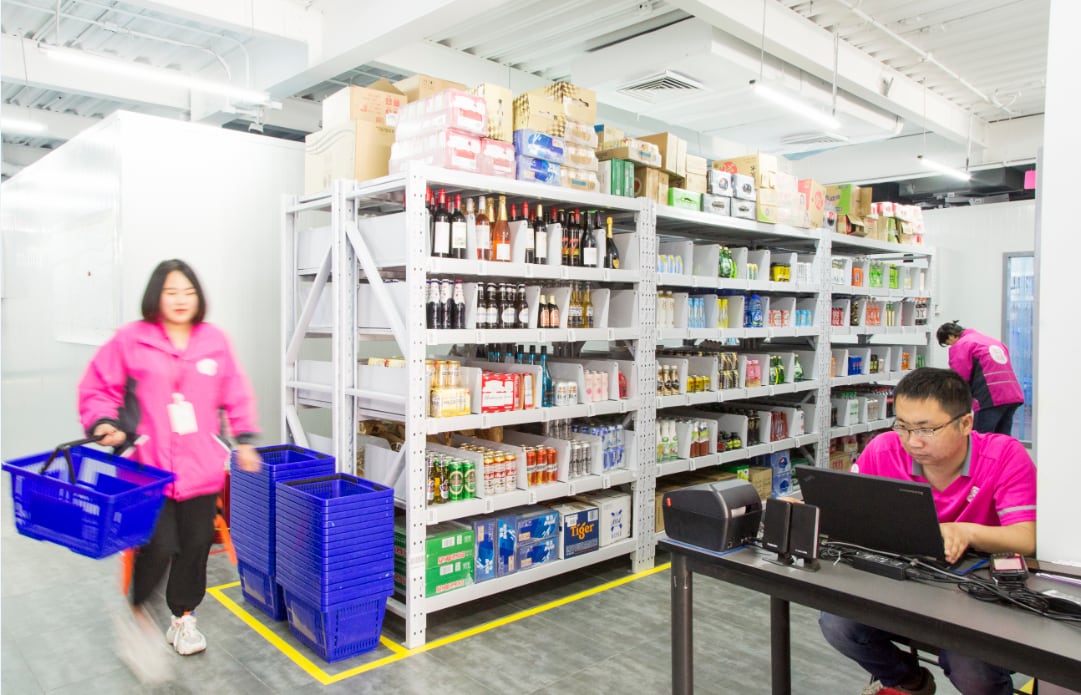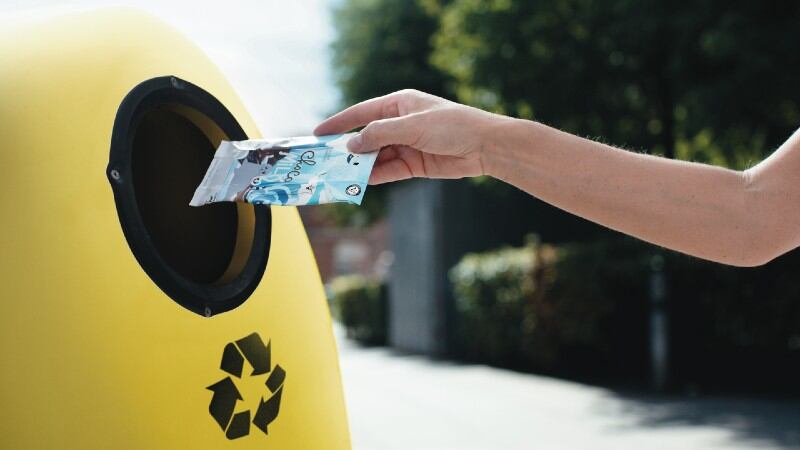This expansion is in line with its strategy to continuously expand its distributed mini warehouse model (DMW) network, which is now available in 17 first and second tier cities in China, including Beijing, Shanghai, Guangzhou, Shenzhen and Hangzhou.
It currently operates 570 DMWs across the cities, and intends to open 25 more in Ningbo this year.
Fast delivery
MissFresh is known for inventing the distributed mini warehouse model (DMW) in China.
Based on this model, products are sourced directly from the place of origin or production, which will be transported through cold chain to its regional processing and quality check centres.
In these centres, which can span up to 10,000 square meters in size with 200 to 300 staff, all products will go through quality checks to meet food safety standards, and will be sorted, processed and packaged accordingly.
For instance, oranges will be packaged in smaller retail packs or cartons to meet requirements.
Following this, products will be transported to its DMW, which are small warehouses at around 300 square meters and are equipped with multi temperature storage zones from room temperature, chilled to frozen storage.
Each warehouse can offer more than 4,000 SKUs, and these warehouses are typically located within the neighbourhood, covering a 3km radius.
This on-demand DMW model allows consumers to receive products within one hour after orders are placed. Average delivery time is about 39 minutes, some delivery could take as little as eight minutes.
To place orders, consumers can go through various channels including MissFresh mobile app, mini program embedded in WeChat, as well as third party platforms like Meituan and JD.
The type of products available include fresh produce like fruits, vegetables, seafood, dairy, beverages, frozen and packaged foods, as well as FMCG products.
Recently, MissFresh also started offering fresh seafood, in addition to frozen seafood which it sold previously.
To do so, the company equipped its DMWs with fish tanks of different salinity and temperatures, customised for various types of seafood from fish, prawns, crustaceans to shellfish.
When delivering to consumers, the seafood is also placed in special water bags injected with oxygen to keep it fresh.
Target customers
MissFresh recorded 11 million transacting users last year. Most of them are around 26 to 47 years.
“80% of them are working group people who live a faster pace of life, are more adapt to technology and online shopping,” Hu Lingling, senior director of investment and financing at MissFresh told FoodNavigator-Asia.
“We think with the increasing spending power, their online spending will also grow gradually over the years.
“Our target customers are supermarket customers, so we want to be the one-stop shopping location which means anything they can buy at offline supermarkets, they can buy on our platform,” said Hu.
“We provide consumers with convenient delivery to meet the spontaneous shopping demand, especially for tier one and tier two cities where people are busy and don’t have a planned consumption especially for fresh products.
They tend to not make plans ahead of time, and they probably only place orders one hour before they go home, so we can address and serve the on-demand shopping habit of these white collar customers in tier one and two cities.”
USP
China’s online grocery delivery service is growing exponentially, likely triggered by the COVID-19 pandemic which accelerated people’s buying behaviours from offline to online.
Compared to other e-grocery models, MissFresh said its distinguishing factor was its on-demand and cold-chain capabilities.
For many of these e-grocery companies, consumers typically make an order and products are delivered the next day or in weeks.
Many of them also operate a community group buying model as well, where consumers place orders through group leaders and receive products the next day. These group leaders tend to be owners of small mom-and-pop shops, and typically use their stores as a warehouse. The warehouses may not be cold chain enabled, which limit products to FMCG like tissues, and produce that do not require low temperature storage such as potatoes. This keeps their SKUs to about 1,000
This limits their SKUs to typically about 1,000, and restricts the type of agricultural products they can sell.
For instance, in the case of live seafood, MissFresh’s approach stands out from some other retailers, who purchase and transport live seafood every few days, resulting in longer storage periods. Live seafood is delivered to MissFresh’s city sorting centers every day to ensure maximum freshness.
Financials
At present, MissFresh is the number two player in China’s on-demand DMW market, the top player being grocery app Dingdong Maicai.
Earlier this year, the company went public on the Nasdaq, and recently announced financial results for Q2 2021.
Total net revenues reached RMB1,894.5 million (US$293.4 million), a 40.7% year-on-year increase.
The total number of orders fulfilled reached 23.8 million for the second quarter of 2021, representing a 32.2% year-on-year increase.
The average price per order reached RMB96.1 (US$14.9), a 2.6% year-on-year increase.
Sales strategy
While many businesses in China participate in sales festivals almost every month, MissFresh opts for a different approach.
This year, it initiated a special cooperation with suppliers in the form of super brands days to offer promotions to consumers.
Most recently, it worked with dairy giants Mengniu and Yili, beverage brand Genki Forest, snack brand Cha Cha, and global companies like Mondelez.
For instance its partnership with Mengniu saw the opening of a pop-up store in Beijing, giving customers free drinks, healthy snacks and at the same time boost their nutritional knowledge.
So far, responses have been positive from both suppliers and customers, and MissFresh hopes to expand on such collaborations in the near future.
New businesses
With most people familiar now with MissFresh’s on-demand DMW retail strategy, it is currently working on two new businesses this year, an intelligent fresh market business and the retail cloud service business.
The intelligent fresh market business aims to utilise its technology to help digitised fresh markets introduce e-commerce capability. This will help fresh market merchants enjoy higher income yet help online customers enjoy a wider shopping environment in a fresh market.
For the retail cloud service business, the company hopes to help small supermarkets start their online business by enabling them with online operating capability.
“We can make a SaaS and AI platform for them so they can offer online delivery service to their original offline customer as well,” Hu said.




